Best Hiking Shoes 2024 Trail Runners
Last Updated: March 14, 2024
Ditch those boots, trail runners are the best hiking shoes
If you’re researching which are the best trail runners to use as hiking shoes, then you’ve come to the right place! This guide is informed by decades of experience ultralight backpacking in trail runners. We’ve worn them as hiking shoes on trails all around the world, and even off-trail through tundra in Alaska’s Brook Range, canyoneering in Grand Staircase-Escalante, and over class III terrain on the Sierra High Route. By now, we’re very confident that trail running shoes are superior to boots for an overwhelming majority of people on an overwhelming majority of hikes.
This buyer’s guide to the best trail running shoes for hiking is for just that – hiking and backpacking, on or off-trail! While every single trail runner we’ve included is renowned for its actual trail running prowess, we analyze each of them exclusively from the perspective of how they are built and how they perform while walking with a backpack on as hiking shoes. For more info about why hiking in trail runners is superior to boots, jump ahead to the pro tips section after the reviews.
Ultimately, the most important factor in determining which is the best pair of trail runners to use as hiking shoes, is which fits you best and is most comfortable. However, that’s very subjective, so for the purpose of online shopping, we will only link to sellers with generous return policies. If a pair of trail running shoes just isn’t comfortable on your feet, you should definitely return or exchange them until you find the right pair. Happy hiking!
And while you’re here, why not gear up with our guides to hiking socks, ultralight sandals, trekking poles, daypacks, and backpacks. Or dive deep into our guide comparing HOKA Speedgoat 5 with HOKA Challenger 7.
You make Adventure Alan & Co possible. When purchasing through links on our site, we may earn an affiliate commission at no additional cost to you. Here’s why you can trust us.
Quick Picks: The Best Trail Runners For Hiking
- Staff Pick: HOKA Speedgoat 5
- Best Zero Drop: Altra Lone Peak 8
- Best On-Trail: HOKA Challenger 7
- Best Traction: Salomon Thundercross
- Top Pick: Topo Athletic Mtn Racer
Best Trail Runner Hiking Shoes Comparison Table
| Hiking Shoes | Price ($) | Weight (oz) | Heel Stack (mm) | Drop (mm) |
| HOKA Speedgoat 5 | 155 | 10.3 | 33 | 4 |
| Altra Lone Peak 8 | 140 | 10.7 | 25 | 0 |
| HOKA Challenger 7 | 145 | 8.9 | 31 | 4 |
| Salomon Thundercross | 140 | 11.1 | 31 | 4 |
| Topo Athletic Mtn Racer 3 | 150 | 10.1 | 33 | 5 |
Full Reviews: Best Trail Running Shoes For Hiking
Best Hiking Shoes – Staff Pick
HOKA Speedgoat 5
HOKA Speedgoat 5 is the trail runner we love most! We find it to be very comfortable and grippy in all situations, and the fifth edition is a big improvement over the fourth, making it lighter and more breathable. Alan and Jaeger were both hiking in Speedgoats as their trail running shoes of choice for going over snowy passes on the Wonderland Trail in 2022. Read more in our full-length HOKA Speedgoat 5 Review.
- Price: $155
- M’ Weight: 10.3 oz | W’s Weight: 8.5 oz
- Heel-Forefoot-Drop: M’s 33-29-4 | W’s 31-27-4
- Lugs: 5 mm | Rockplate: No
- Width: Average | Overall Fit: True to size
- Wide Sizes Available: yes
- On Trail/Off trail? Either
- Pros: Comfortable. Great Traction. Very cushioned. Breathable. Very grippy.
- Cons: Might be too much cushion for some.
Construction & Features
With a heel stack height >30, this is the tallest and most cushioned pair of trail running hiking shoes on our list, but aside from the excellent comfort that it provides, you would hardly notice it to be thick and clunky. Rather, we find walking in it to be pleasant, and that our steps are accurate and precise.
Speedgoats have a 4mm drop, which we find to be a sweet spot. Adding to the comfort is a widened toe box , though the entire footbed is narrower than Altra Lone Peak’s, so those with average width feet won’t slosh around as much in technical terrain.
The tread might be our favorite part of this trail runner. 5mm of Vibram Megagrip with traction lugs do an excellent job on dirt, rock, mud, grass, and anything else you might walk on. We rarely ever slip or slide when wearing Speedgoats.
Our only complaint is that the tread wears out a bit faster than average, and worn tread is the most likely reason you would need to replace a pair. We expect this trail running shoe to last a few hundred miles, less if you’re constantly on scratchy/rocky terrain.
As hiking shoes go, the mesh upper is very comfortable, quick drying, breathable, and doesn’t rub or chafe at all. The toe cap is reinforced and has yet to fail us. The laces are simple, but seem to grip themselves well and never come undone. We love the extended heel tab, which makes sliding in and out a breeze.
Verdict
HOKA Speedgoat 5’s are an incredible, effective, comfortable trail runner, at home on or off the trail, no matter how gnarly the terrain.
Best Zero Drop Hiking Shoes
Altra Lone Peak 8
The Altra Lone Peak 8 trail runners are the latest iteration of the hiking shoe that popularized zero drop, but equally as famous for its wide toe box fit.
- Price: $140
- M’ Weight: 10.7 oz | W’s Weight: 9.2 oz
- Heel-Forefoot-Drop: 25-25-0 mm
- Lugs: ~4 mm | Rockplate: Yes
- Width: Standard with wide toe box | Overall Fit: True to size
- Wide Sizes Available: yes
- On Trail/Off trail? Either
- Pros: Wide toe box is very comfy on long hiking days. Good value. Zero drop (if that’s what you’re into).
- Cons: Wide toe box is sloppy for traversing slopes. Outsole is inferior to Vibram. Wider heel cup may not provide secure fit for narrower heels. Moderate cushion.
Construction & Features
The Altra Lone Peaks are famous for two primary characteristics, zero drop and wide toe box. We will address each.
Firstly, the wide toe box. This is generally a great feature for hiking long days on trail. It allows your toes to splay out, improving balance. But perhaps more importantly, it offers excess space to accommodate swollen feet after so many miles. It also reduces contact with the shoe sidewalls and reduces the likelihood of your toes rubbing against each other, all of which helps to prevent blisters.
But there is downside. When traversing perpendicularly across steep slopes, the angle will cause your forefoot to drift about inside the wide toe box, creating a sloppy, sloshing effect. This decreases comfort and safety, and increases the likelihood of rolling an ankle. As such, we dislike this shoe for off-trail travel, despite the capable tread.
Zero drop is another big part of the Lone Peaks. As a reminder, this means that the heel and the forefoot are on a flat plane with no downward slope as you would find in traditional running shoes. This activities more of your calf muscles. Some people love it, other hate it, and there’s not right or wrong answer. Whatever works best for you!
A few other notable elements to this shoe are its moderate midsole cushioning of 25mm. While we have come to prefer a slightly cushier shoe, this is still a totally valid and acceptable amount and they are comfy to wear. It also features a rock plate. The proprietary MaxTrac outsoles with ~4mm lugs (estimate) are fine, but people seem to find that they’re a bit less grippy on wet surfaces and a bit lower durability than true Vibram rubber. Nonetheless, they’re quite grippy in most situations.
Regarding the latest updates, V8 appears to be a minor upgrade over the 7 series. This season, the engineered mesh upper has been swapped back to a more traditional woven ripstop grid fabric for enhanced durability and old-school Altra chic. Perhaps the biggest and best surprise is that Altra cranked the price downward by $10, inflation be damned.
Verdict
The Altra Lone Peak 8s are still a great hiking shoe, the wide toe box is still super comfy, and they’re still zero drop if that’s what you’re into. And for $140, they’re actually a pretty good value!
Best On-Trail Performance
HOKA Challenger 7
Alan has previously described the Hoka Challenger 7 as the Goldilocks of trail running shoes for hiking. This is because it’s perfectly cushioned, lightweight, durable, long lasting, and such a comfortable and well-rounded pair of hiking shoes. Read more in our comprehensive HOKA Challenger 7 Review.
- Price: $145
- M’s Weight: 8.9 oz | W’s Weight: 7.3 oz
- Heel-Forefoot-Drop: M’s 31-26-4 | W’s 29-24-4
- Lugs: 4 mm | Rockplate: No
- Width: Average | Overall Fit: True to size
- Wide Sizes Available: Yes
- On Trail/Off trail? On Trail
- Pros: Lightweight. Perfectly cushioned. Wide toe box. Excellent on trail.
- Cons: Modest traction.
Construction & Features
We would describe the cushion as solid and comfy, large but never too large to get in the way. It’s basically our dream cushion, perfect all-around. If we could switch every other pair of trail running shoes’ cushion out for Challenger 7’s, we probably would.
Compared to other trail runners on our list, Challenger 7 has a slightly less aggressive tread and with 4mm, instead of 5mm lugs, and flat spots under the midfoot for improved energy return. But it’s still incredibly effective and more than grippy enough for crushing long mileage days on most trails. A
dding to that is its low total weight per shoe. Lighter trail runners, even if only by one ounce, help hikers walk faster.
Like its more aggressive sibling the Speedgoat, Challenger 7 uses a quick drying, super breathable mesh with a reinforced toe cap. It meets and exceeds our highest expectations in terms of comfort and durability.
Plus, we love the extended heel tab for ease of on/off. Taking off the ol’ hiking shoes to let your feet breath during lunch is highly recommended.
Fit is fairly straight down the middle as trail running shoes go, and it includes a wide toe box which we love. Wide sizes are also available.
Verdict
The Challenger 7 is an exceptionally great trail runner for hiking on most trails, and we feel it is the hypothetical best pair of hiking shoes for the typical hiker on a typical hike.
Best Traction
Salomon Thundercross
Enjoy exceptional traction and comfort in this fully cushioned trail running shoe with aggressive 5mm rubber lugs. With zero break-in required, Thundercross’s outsole delivers best-in-class grip to hikers and runners alike on steep and/or slippery terrain. Read more in our full-length Salomon Thundercross Review.
- Price: $140
- M’ Weight: 11.1 oz | W’s Weight: 8.6 oz
- Heel-Forefoot-Drop: 31-27-4
- Lugs: 5 mm | Rockplate: No
- Width: Average trending narrow | Overall Fit: True to size
- Wide Sizes Available: No
- On Trail/Off trail/Road: Yes/Definitely/No
- Pros: Exceptional best-in-class traction. No break-in period/comfy out of the box. Energy return foam. Full cushion. Good value. Quick/easy on/off. Protective rand on entire forefoot and side foot.
- Cons: Quicklace™ system is less comfortable than traditional laces when worn tight. Lots of non-breathable surface area on upper.
Construction & Features
What an interesting upper. The tightly woven fabric above the forefoot continues up the midfoot to create a collar. The QuickLace system (cinch with one pull) is quick to operate and tucks into the collar, but the narrow cordage can create a pressure point at the ankle when fully tightened. Plasticy reinforcements are added to the side for structure and to hold pressure from the laces. A full coverage rand protects the front and side of the foot.
With a 31mm energyFOAM midsole, the Thundercross deliver a comfy ride to runners and hikers alike. We would describe it as full-cushion. There is a 4mm drop between heel and forefoot, offering a universal, well balanced foot angle.
The outsole is decked out in aggressive and extremely grippy 5mm lugs that perform well on all types of difficult terrain including rock, mud, dirt, and most importantly, steep slopes. This shoe is our current go-to wherever traction is key.
Fit-wise, we would describe this shoe as true to size length, standard width midfoot, with a slightly wide forefoot and narrow heel.
Verdict
Choose the Thundercross for running and hiking confidently on steep terrain when traction is paramount, but all-day comfort still matters. Thanks to the aggressive lugs, standard fit, full-cushion midsole, and near-universally appealing 4mm drop, almost anyone can find what they’re looking for in this shoe. Whether or not you love the QuickLace system, we’re confident that you’ll love end result, which is a great all-around pair of trail runners.
Top Pick Hiking Shoes
Topo Athletic Mtn Racer 3
The Topo Athletic Mtn Racer 3 is a top contender among trail running shoes for hiking, because it’s lightweight, cushioned, low-but-not-zero drop, and has a wide toe box. It is most similar to the HOKA Speedgoats, but with a wider toe box, cushioned tongue, and slightly less aggressive tread.
- Price: $150
- M’ Weight: 10.1 oz | W’s Weight: 8.3 oz
- Heel-Forefoot-Drop: 33-28-5
- Lugs: 4 mm (estimate) | Rockplate: No
- Width: Average, with extra wide toe-box | Overall Fit: True to size
- Wide Sizes Available: No
- On Trail/Off trail? Either
- Pros: Comfortable. Wide toe box. Cushioned. Breathable. Protective toe rand. Good all-arounder. Padded tongue.
- Cons: Toe box might be too wide for some.
Construction & Features
Starting with the fit, we would describe these as fairly standard/true to size, only with quite a wide toe box. It’s wider than HOKA, and similar to how Altra used to be before they slimmed down a bit with the Altra lone peak 7.
We’ve always loved Topo’s laces and tongues, because they’re highly cushioned, and rarely ever come undone. This increases comfort, and reduces the likelihood of cutting of circulation in the event that you have to really cinch down on technical terrain.
The lugs are nice and grippy, with moderately deep vibram lugs, but the traction is not exceptional. Fine though, because not every shoe needs to be optimized for that, and bigger/deeper lugs add weight – not what a racer wants. What they do want is a lighter weight shoe, which you get here, at 10.1 oz per shoe for men’s, and 8.3 oz for women’s. This is important for hiking too, and adds spring to your step.
The proprietary “Zip Foam” insole could be springy to walk or run in, but for the most part, you probably won’t notice it that much while hiking. The mesh upper has a nicely protective front rand and breathable textile around the mid foot.
Verdict
The Topo Athletic Mtn Racer 3 is a great all-arounder for both hiking and running. They are a direct competitor to our beloved HOKA Speedgoats, and may be worth choosing if you value wider toe boxes and cushioned laces/tongues.
Pro Tips and Buyer Info for Hiking in Trail Runners
Why are trail runners better than boots for hiking and backpacking?
Trail running shoes for hiking are better than boots for the following reasons:
- They are significantly lighter weight, which makes each stride less taxing, allowing the wearer to hike faster and more efficiently.
- Trail runners have grippier outsoles and lugs for better traction.
- They are comfier, more breathable, and far less likely to cause blisters.
- Used as hiking shoes, trail runners are less rigid and give better surface feedback, which increases the accuracy, mobility, stability, and balance of your footfalls, which reduces likelihood of sprain.
- Over time, wearing low top trail running shoes helps to increase the strength of your ankles, eliminating the need for high tops and reducing the likelihood of a future sprain.
- Lastly, they also provide everything you need to start trail running, if you so choose! It’s great training for hiking season!
Why do we prefer trail running shoes that are not waterproof?
In almost all hiking scenarios, even most wet, rainy, and cold ones, we prefer hiking in traditional mesh trail runners, rather than boots, waterproof hiking shoes, or even waterproof trail running shoes. This is because waterproof shoes are much warmer, and significantly less breathable than mesh, which causes heat build up and foot sweat.
This in turn leads to an increased likelihood to blister, especially in conditions that should be dry and pleasant.
Over the course of a backpacking trip, we would rather get wet and dry off, then stay damp the whole time. It is a marketing ploy from hiking shoe brands to convince people they need waterproof shoes to hike. There are some situations, usually involving snow where we will wear waterproof shoes, but they are few and far between.
Why do we like trail runners with wide toe boxes?
Over the course of a long day of hiking, through repeated footfall impacts, the forefoot will start to swell and the toes will expand and spread apart slightly. For this, it is immensely helpful and significantly more comfortable to have trail running shoes with a wide toe box, because it prevents discomfort at the end of the day when you need it most.
However, wide to boxes aren’t license for a sloppy midfoot or heal cup, so it’s important that you find a trail runner that fits and enhances in this way, and is not just a wide loose shoe.
What is heel/forefoot stack height and what does drop mean?
Let’s go over some of the basic stats for hiking shoes, which may be foreign to readers. Heel-to-toe drop and stack height, both of which are measured in millimeters. Heel-to-toe drop, or drop, refers to the difference between the height of your heel and the height of your toe.
Basically, a zero or low drop shoe encourages the use of more calf and Achilles engagement, taking pressure away from your knees.
On the other hand, higher drop hiking shoes encourage a rearfoot strike, which may alleviate any Achilles pain or strain. A trail running shoe’s stack height refers to the number of millimeters it elevates your feet from the ground.
Higher stack heights will provide more plush and comfort, while lower stack heights will help the user feel more secure and close to the ground. The other stats we’ve provided, such as comfort, off-trail use, traction, and more are all self-explanatory.
Should you wear gaiters with your trail running shoes?
Nobody on the Adventure Alan staff are super keen on gaiters. We tend to hike in pants, and find that based on decades of backpacking experience, debris rarely enters our shoes, and when it does, it’s trivially easy to get rid of it. For 95% of hiking we don’t wear gaiters.
But for some conditions, like snow, sand, or loose gravelly off-trial terrain (as scene in the cover photo), they can come in very handy. Shop gaiters for trail running shoes at REI.
More Reading
How to Choose the Right Hiking Shoes | Everything You Need to Know Which covers, the Myth of Ankle Support, Wide vs Narrow Footbox, Zero Drop Shoes, High vs Low Stack…
Conclusion
Stepping into the right shoe drastically changes life on the trail, whether you struggle with blisters, foot pain, or general fatigue. Here at Adventure Alan we are huge fans of efficient and lightweight shoes that still provide adequate comfort and traction for longer trips. However, we hope with this range of options you find the fit that best suits your needs.

 Best Trekking Poles 2024 Hiking & Backpacking
Best Trekking Poles 2024 Hiking & Backpacking
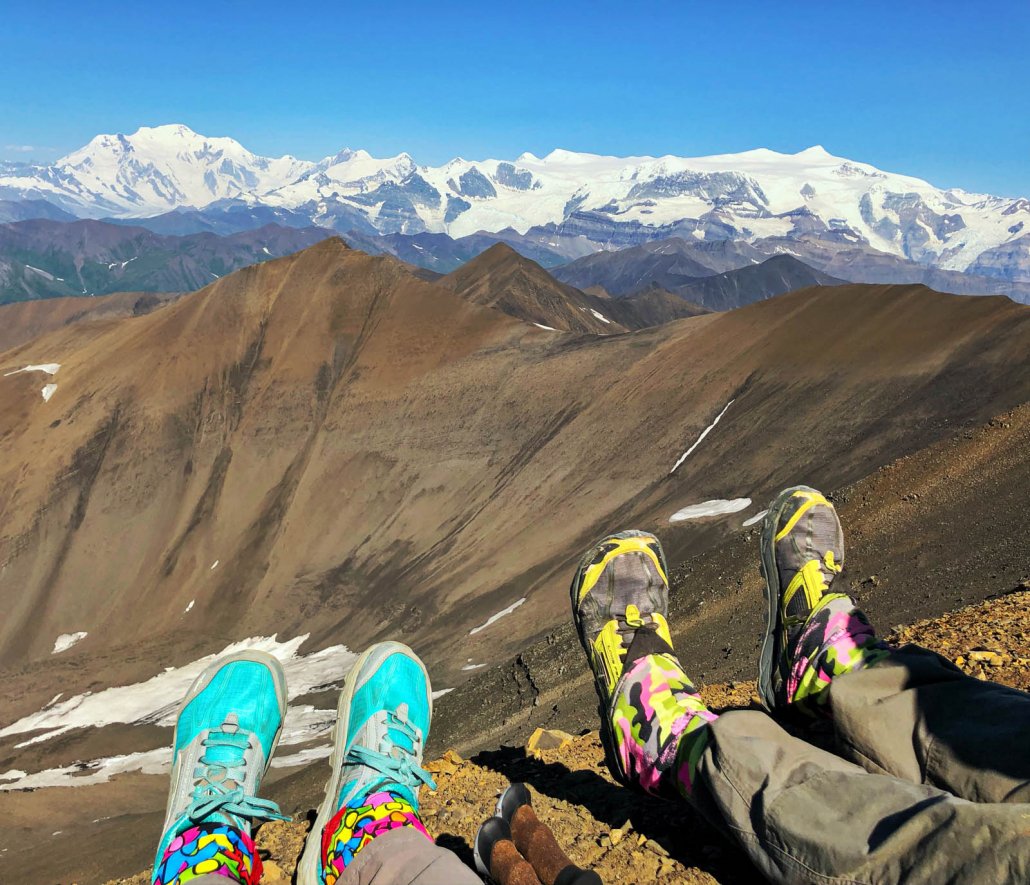
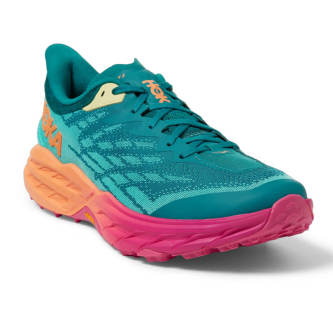
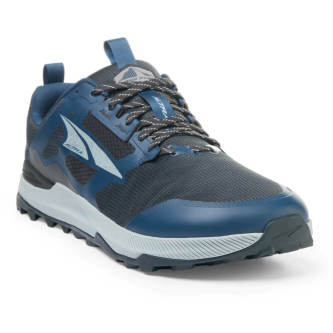
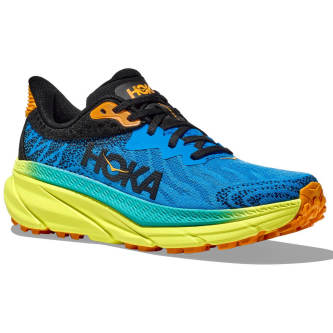
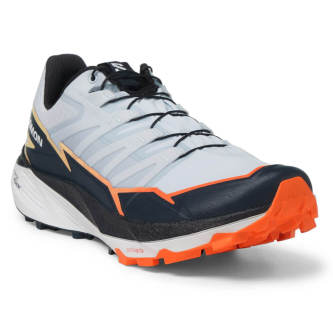
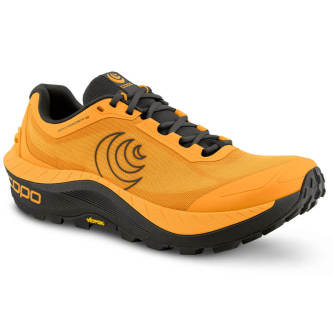
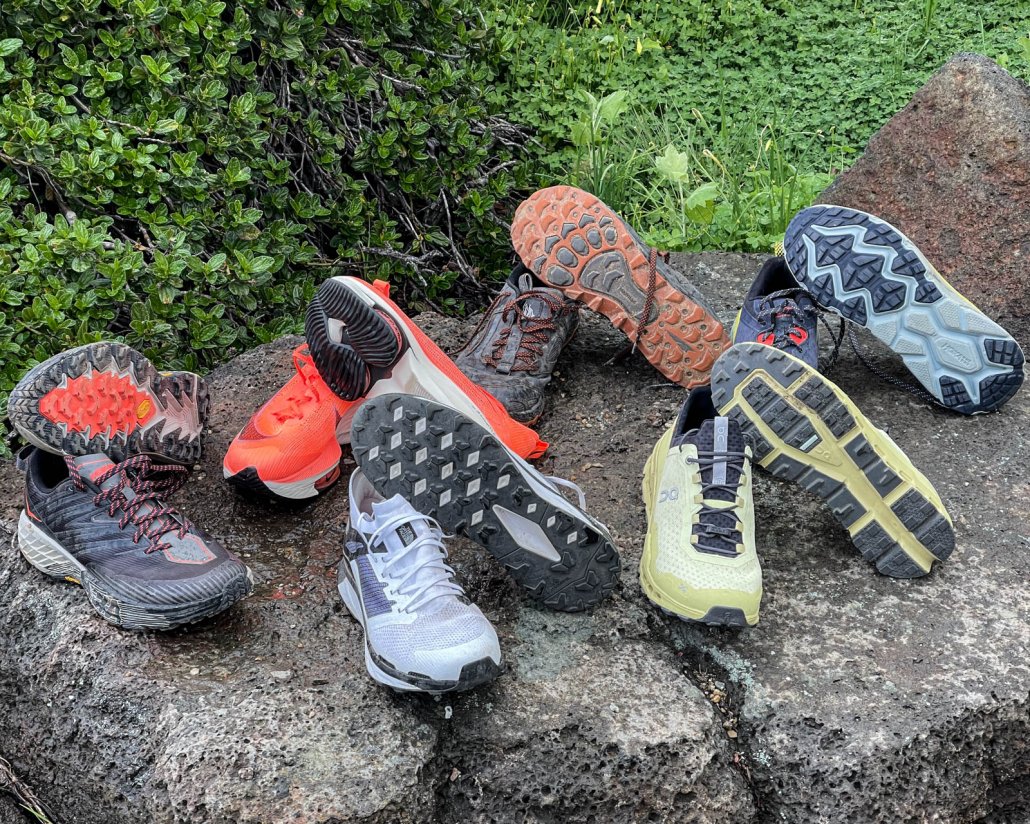
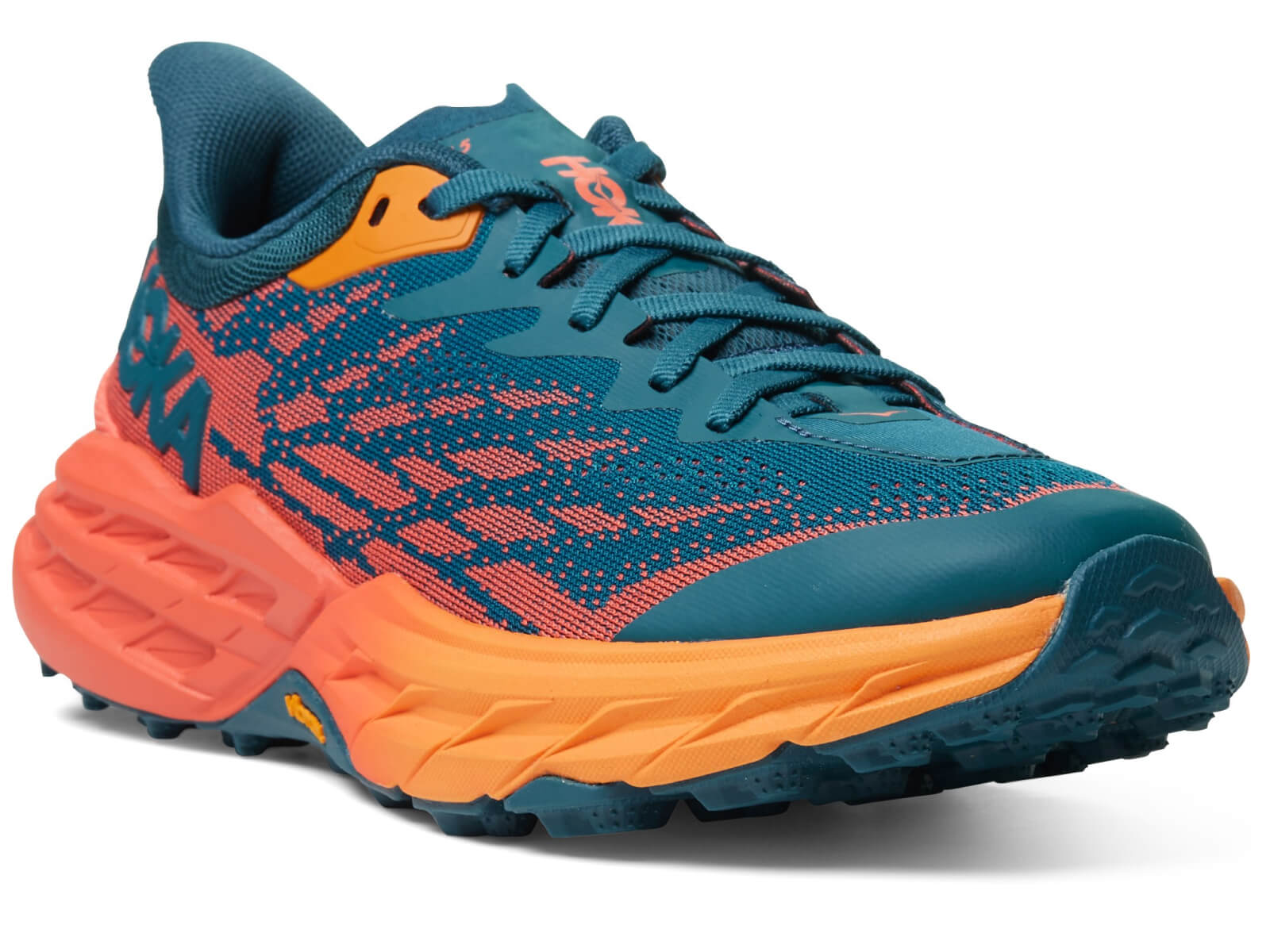

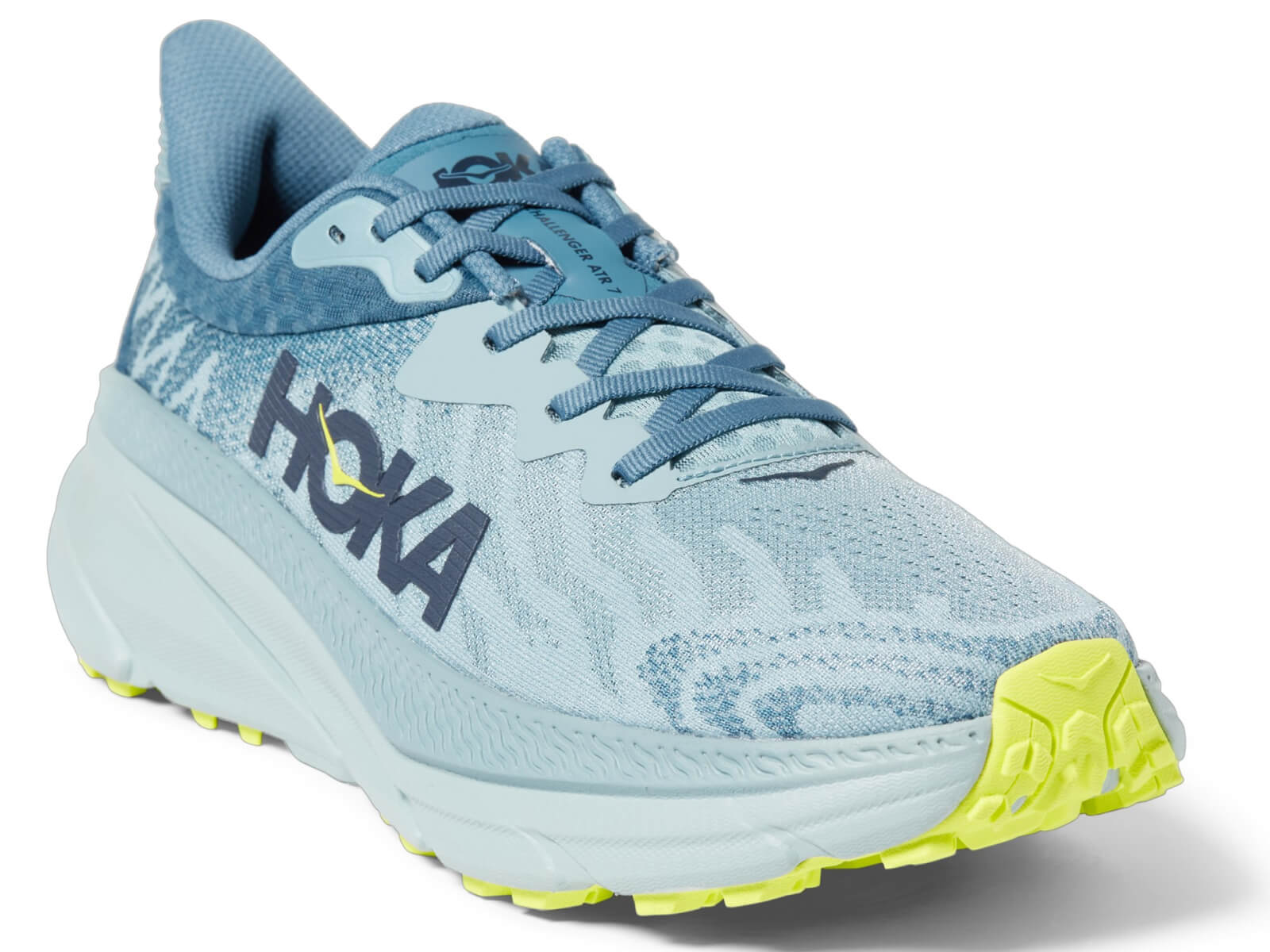
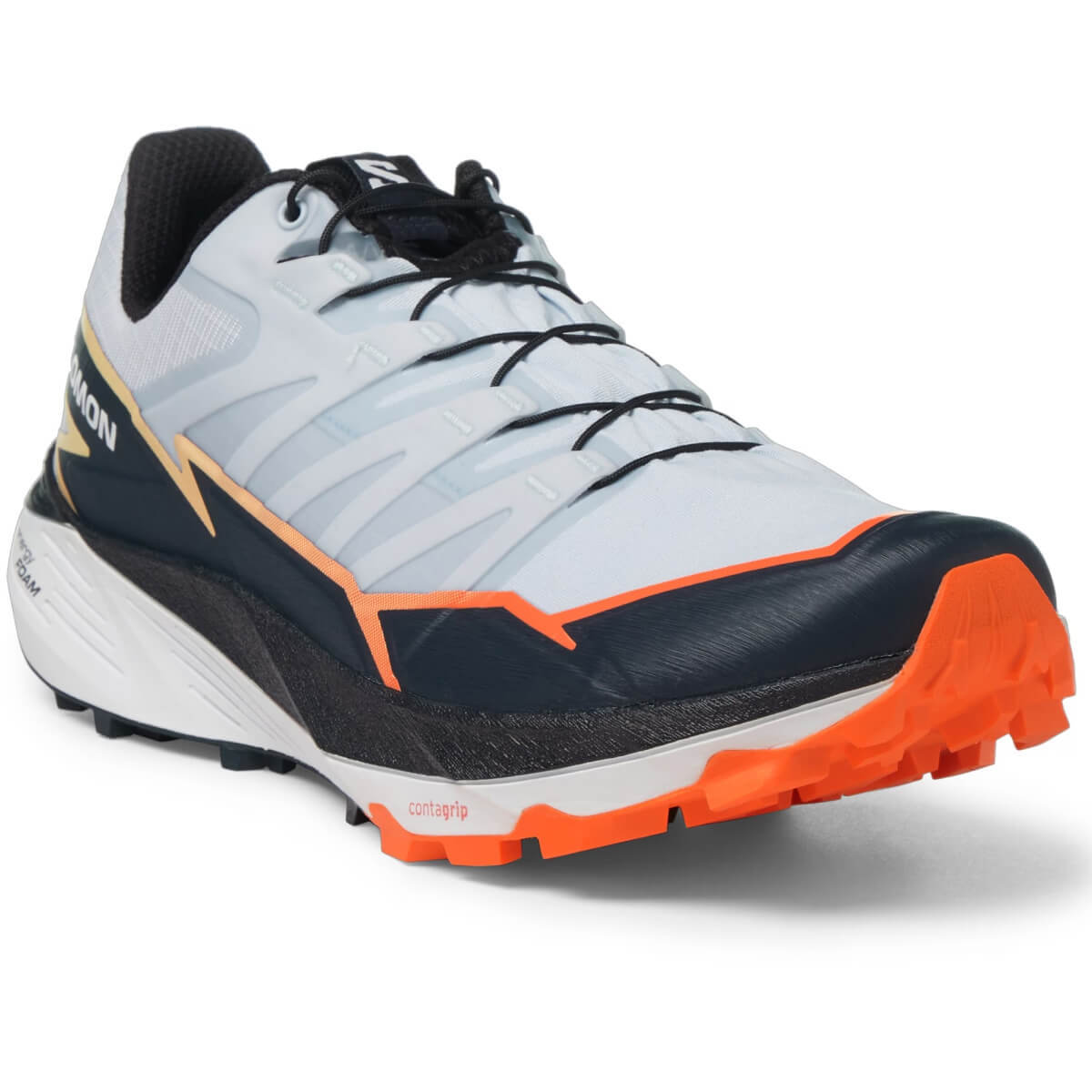
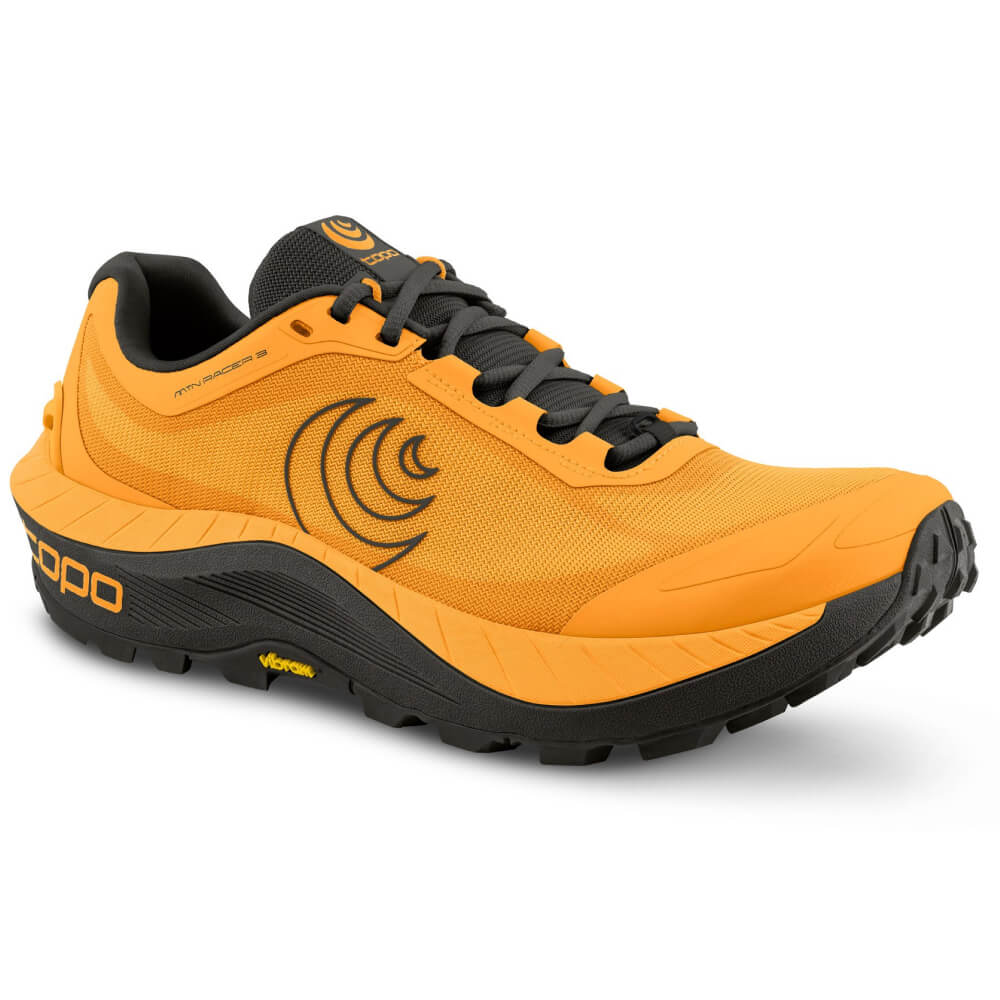
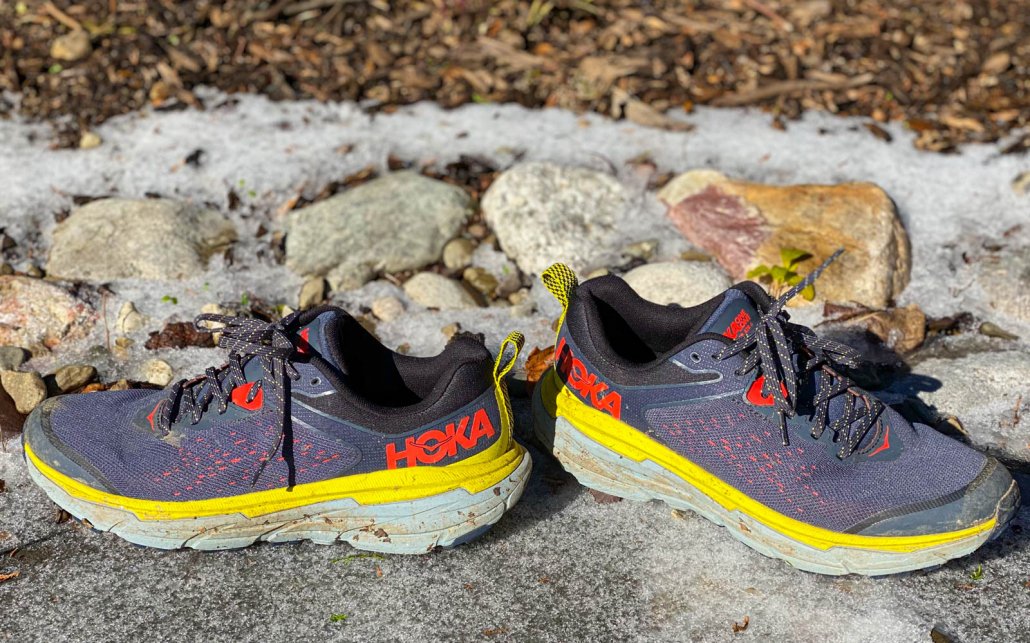
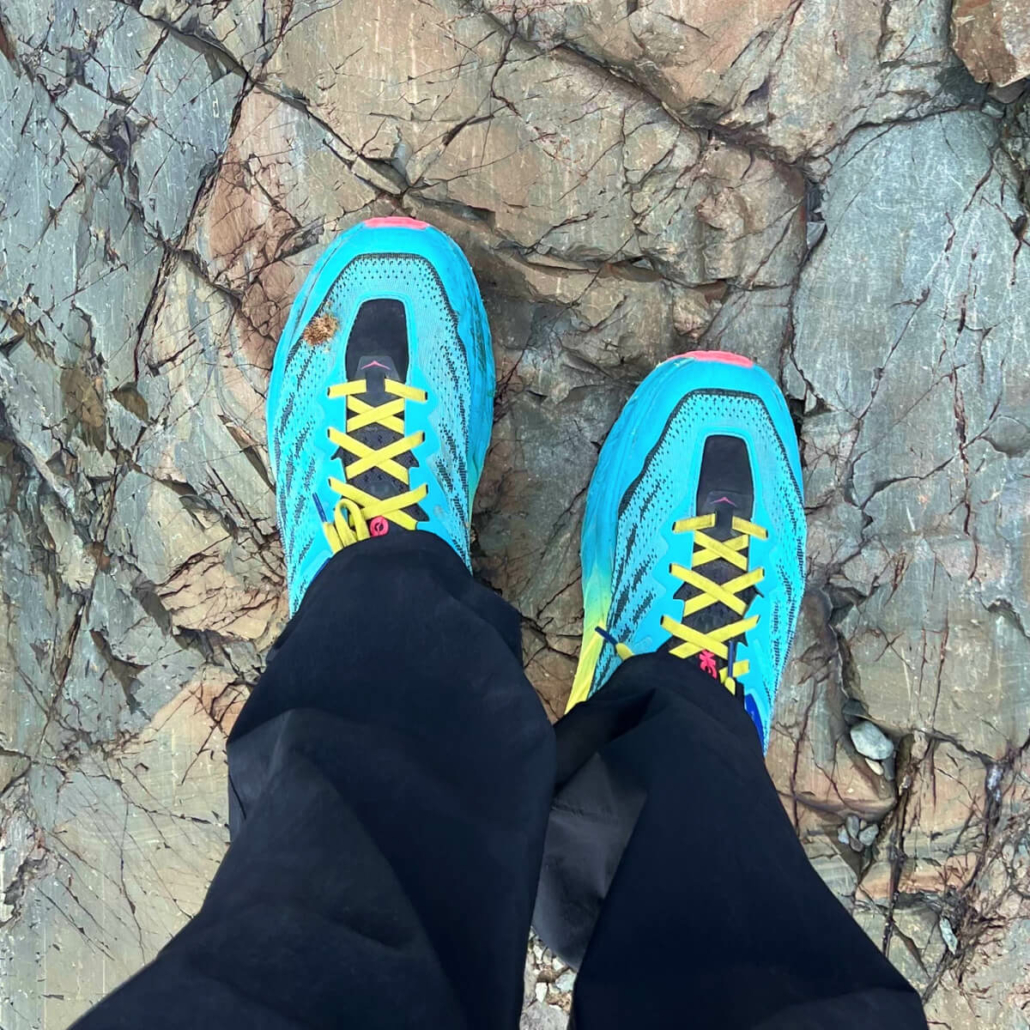
Share this entry